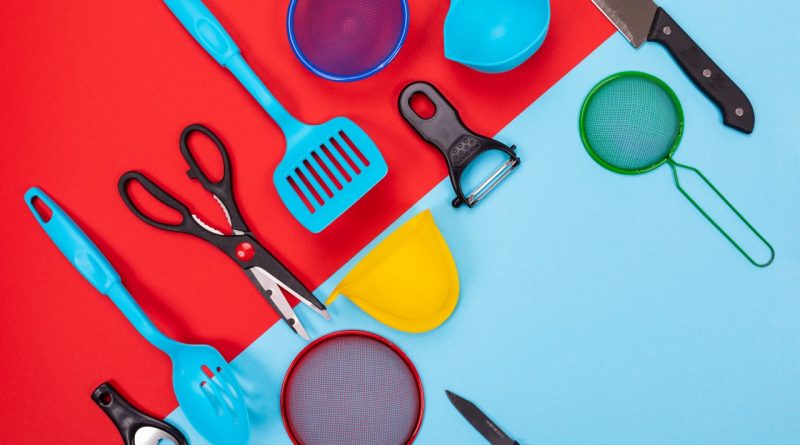The Relationship Between Zwilling Design And Minimalism
The relationship between Zwilling design and minimalism reflects a deep-rooted philosophy that resonates with both culinary professionals and home cooks alike. Founded in 1731, Zwilling J.A. Henckels has long been synonymous with high-quality kitchen tools and utensils. Their design ethos embraces minimalism, prioritizing functionality, simplicity, and elegance. This article explores the origins of Zwilling’s design philosophy, how minimalism enhances culinary experiences, the key features of their products, and practical tips for incorporating minimalist tools into your cooking routine.
Exploring the Origins of Zwilling Design Philosophy
Zwilling J.A. Henckels was established in Solingen, Germany, an area known for its tradition of fine craftsmanship. The company’s design philosophy has evolved to embody a blend of traditional techniques and modern aesthetics. At the core of Zwilling’s approach is a commitment to quality, which is evident in every product. This focus on craftsmanship aligns closely with minimalist principles, as each piece is designed to serve a specific purpose without unnecessary embellishments.
Over the decades, Zwilling has embraced a minimalist design that emphasizes form and function. This means that their products are not just visually appealing; they are engineered to enhance the user experience. The use of high-grade materials like stainless steel not only provides durability but also aligns with the minimalist ethos of simplicity and longevity. The clean lines and understated elegance of Zwilling products reflect a philosophy that prioritizes efficiency and effectiveness over superfluous design elements.
The convergence of Zwilling’s design philosophy with minimalism is evident in their branding and marketing strategies as well. By promoting the idea that less is more, Zwilling encourages consumers to invest in high-quality, essential tools that can elevate their cooking experience. This focus on essentiality resonates with modern consumers who are increasingly drawn to the minimalist lifestyle, making Zwilling a brand that stands the test of time.
How Minimalism Enhances Culinary Experiences with Zwilling
Minimalism in design fosters an environment where the cook can focus on the culinary experience itself, rather than being distracted by cluttered workspaces or excessive gadgets. Zwilling products, with their sleek and simple designs, promote this focus. By streamlining the cooking process, these tools help cooks engage more deeply with the ingredients and techniques they are using, enhancing the overall experience in the kitchen.
Furthermore, minimalism encourages a sense of mindfulness in cooking. When using Zwilling tools, the attention shifts away from the complexity of numerous gadgets toward mastering the art of cooking itself. This focus on purity and simplicity allows for a more enjoyable culinary experience, as cooks can appreciate the flavors and textures of their ingredients without unnecessary distraction. The minimalist design philosophy encourages cooks to be intentional about their choices, leading to a more fulfilling cooking journey.
Finally, the ease of use that comes with minimalist designs cannot be overstated. Zwilling products are crafted to provide comfort and efficiency, allowing cooks of all skill levels to perform tasks with ease. Whether it’s a knife that fits perfectly in the hand or cookware that distributes heat evenly, these thoughtful designs enhance culinary performance, making cooking more enjoyable and less stressful.
Key Features of Zwilling Products That Embrace Minimalism
Zwilling products incorporate several key features that embody minimalism. One of the most notable is the ergonomic design that prioritizes user comfort. Knives, for example, are not only sharp but also balanced and easy to handle, making them accessible to both amateur and professional chefs. This focus on ergonomics supports the minimalist philosophy by ensuring that each tool is intuitive and efficient, reducing the need for excessive effort or complicated maneuvers in the kitchen.
Another essential feature is the high-quality materials used in Zwilling products. Stainless steel, ceramics, and other durable materials have been chosen for their longevity and ease of maintenance. This aligns with minimalist values by promoting sustainable practices—investing in fewer, high-quality items rather than accumulating numerous products that may not last. The result is a kitchen that remains uncluttered, showcasing only the tools that truly matter.
Lastly, Zwilling emphasizes multifunctionality in their designs. Many of their products serve multiple purposes, which is a hallmark of minimalist design. For instance, a well-crafted chef’s knife can handle a variety of tasks, from chopping vegetables to slicing meats. This versatility encourages cooks to simplify their toolkits, leading to a more streamlined and efficient cooking experience.
Practical Tips for Incorporating Minimalist Tools in Cooking
To effectively incorporate minimalist tools into your cooking, start by assessing your current kitchen setup. Identify which items are essential and which ones can be eliminated. Consider the Zwilling range for high-quality alternatives that will last longer and perform better. By investing in fewer, high-quality tools, you can streamline your cooking process and create a more organized kitchen.
Next, focus on multifunctional tools that can serve various purposes. For example, a chef’s knife can replace several other knives, while a cast iron skillet can be used for frying, baking, and even serving. By choosing versatile tools, you can minimize clutter and maximize functionality, aligning with the minimalist approach to cooking.
Finally, create a designated cooking space that reflects minimalism. Keep only the tools that you regularly use within easy reach and store away those that are rarely utilized. This not only makes cooking more enjoyable but also encourages a more mindful approach to food preparation. A clean, uncluttered workspace allows you to focus on the cooking process, leading to improved culinary experiences with Zwilling products.
In conclusion, the relationship between Zwilling design and minimalism highlights the importance of quality, functionality, and simplicity in the kitchen. By embracing minimalist principles, Zwilling products enhance culinary experiences while promoting a mindful approach to cooking. Incorporating minimalist tools into your kitchen can lead to a more organized, efficient, and enjoyable cooking environment, ultimately enriching your culinary journey.
